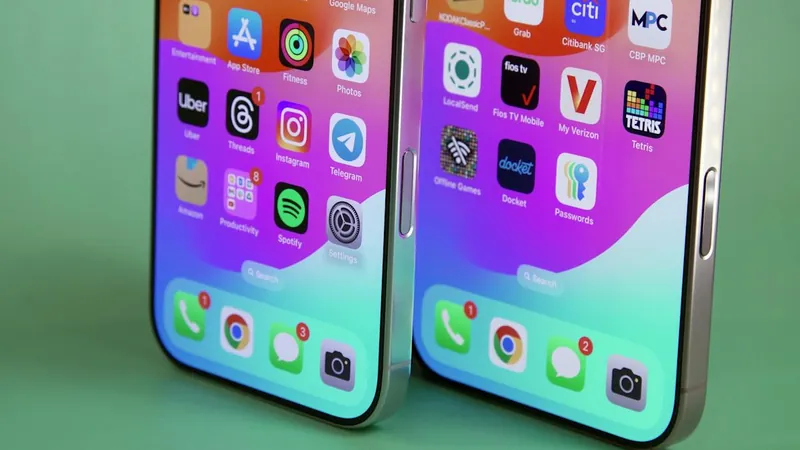
Will the iPhone 17 Finally Bring ProMotion to the Masses?
2025-09-08
Author: John Tan
Since purchasing my iPhone 12 in 2020 to upgrade from my aging Pixel 3, I’ve stuck with it for almost five years. Why? Because Apple has yet to incorporate a feature that’s been at the top of my wish list—a ProMotion display. For those out of the loop, ProMotion is Apple’s term for their high-refresh rate display.
Apple debuted ProMotion with the iPhone 13 Pro, enabling a stunning 120Hz refresh rate that beautifully scales down to 1Hz for always-on display functionality. This makes everything—from gaming to navigating daily apps—smoother than ever. In fact, high-refresh rate displays have become so popular that even entry-level Android devices are now featuring them, while iPhones still require a hefty price tag of $1,000.
The closest I came to upgrading was in 2023 with the release of the iPhone 15, boasting the new Dynamic Island cutout for the first time in a regular model. But even with all its upgrades—including an improved display, enhanced camera, and USB-C charging—I couldn’t abandon my iPhone 12 because it lacked a ProMotion screen. I can’t be the only one in this boat.
Apple's strategy of rolling out essential features slowly seems to be falling behind its competition. Notably, display analyst Ross Young predicted back in 2022 that the regular iPhones wouldn’t get ProMotion until at least 2024, citing supply chain limitations. Nonetheless, we saw alternatives like Google's Pixel 5 come equipped with a 90Hz OLED display in the same year.
But the wait may finally be nearing its end! Reportedly, all four 2025 iPhone models—the iPhone 17, 17 Pro, 17 Pro Max, and the new iPhone 17 Air—are expected to come with 120Hz displays. For me, this could mean it’s finally time to upgrade, but it raises questions about the iPhone lineup’s future.
If I had to speculate, it seems Apple’s hesitancy to introduce ProMotion in the regular iPhone was less about supply chain limitations and more about marketing strategy—encouraging consumers to shell out extra for Pro models. Yet, if the rumors hold true, the iPhone 17 will blur the lines. With ProMotion no longer setting the Pro versions apart and rumors of them returning to aluminum builds, there’ll be fewer reasons to opt for pricier models—unless you want niche features like a telephoto camera or a larger display on the Pro Max.
This could very well be the last year we see iPhone Pro as we know it. During a recent podcast with Bloomberg's Mark Gurman, he hinted that Apple might pivot to focus more on an iPhone Air model. Initially expected to feature a single camera and shorter battery life than its counterparts, Gurman indicated that Apple plans to refine these components, potentially elevating the Air to flagship status.
So, while the iPhone Air might seem like an afterthought now, it’s not hard to envision a future where it competes directly with the regular iPhone. Perhaps it’s optimistic thinking, but I’m hopeful that Apple will offer similar features across both lines, charging a premium for those seeking a sleek, top-tier device.




 Brasil (PT)
Brasil (PT)
 Canada (EN)
Canada (EN)
 Chile (ES)
Chile (ES)
 Česko (CS)
Česko (CS)
 대한민국 (KO)
대한민국 (KO)
 España (ES)
España (ES)
 France (FR)
France (FR)
 Hong Kong (EN)
Hong Kong (EN)
 Italia (IT)
Italia (IT)
 日本 (JA)
日本 (JA)
 Magyarország (HU)
Magyarország (HU)
 Norge (NO)
Norge (NO)
 Polska (PL)
Polska (PL)
 Schweiz (DE)
Schweiz (DE)
 Singapore (EN)
Singapore (EN)
 Sverige (SV)
Sverige (SV)
 Suomi (FI)
Suomi (FI)
 Türkiye (TR)
Türkiye (TR)
 الإمارات العربية المتحدة (AR)
الإمارات العربية المتحدة (AR)